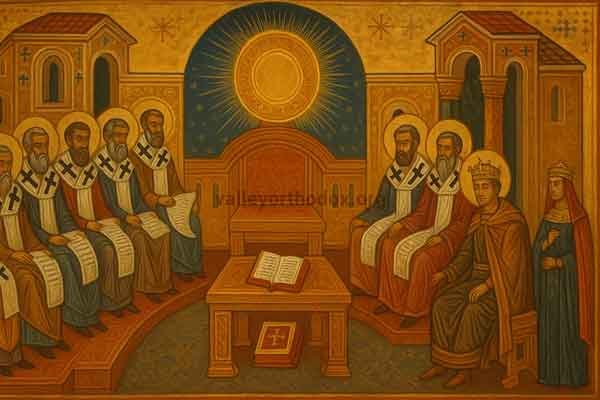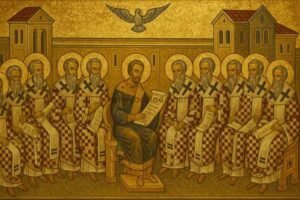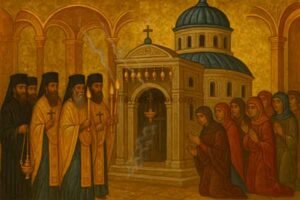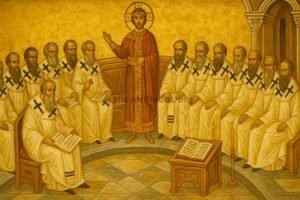Why Chalcedon? The Road from Ephesus (431)
After Ephesus (431) upheld Theotokos for the Virgin Mary and the unity of Christ’s person, new tensions emerged around how to speak of Christ’s divinity and humanity. Some language blurred or collapsed the distinction of natures; other language risked dividing Christ. Chalcedon gathered to resolve these pressures with balance and clarity.
The Chalcedonian Definition
Chalcedon confessed one and the same Lord Jesus Christ, perfect in divinity and perfect in humanity, “in two natures, without confusion, without change, without division, without separation.” The natures remain distinct yet united in the one Person (hypostasis) of the Son. This protects both the reality of the Incarnation and the integrity of salvation.
The Tome of Leo
The Tome of Leo, a doctrinal letter by Pope Leo I, articulated the unity of Christ’s person and the distinction of natures. Chalcedon received it as consistent with the creeds and patristic faith, integrating its language into the conciliar settlement.
Key Outcomes and Canons
- Christological clarity: Confessional language that remains the standard in Orthodox theology.
- Canonical legislation: Norms for church discipline, appeals, and jurisdiction.
- Canon 28: Recognized the growing importance of Constantinople in ecclesial order—an enduring reference point in later discussions of primacy and synodality.
Reception and Aftermath
Chalcedon’s definition was received across the Chalcedonian (Eastern/Byzantine) Orthodox world. At the same time, some ancient communities—especially in Egypt and Syria—rejected Chalcedon, forming parallel hierarchies (today’s Oriental Orthodox). Contemporary dialogues seek common ground, clarifying that historic disagreements often included terminology and politics as well as doctrine.
What Chalcedon Means for Faith and Worship
The Church’s hymnography, iconography, and sacraments presuppose Chalcedon: the one Christ whom we adore is both true God and true man. Because He is fully human, He heals what He assumes; because He is fully divine, He saves utterly.
Preaching Christ Today
Pastoral preaching draws on Chalcedon to address common misunderstandings: Christ is not a blend of divinity and humanity, nor two persons acting in tandem. He is one Lord, in whom divinity and humanity meet “without confusion, without change, without division, without separation.”
Chalcedon’s Place in the Great Councils
Together with Nicaea (325) and Constantinople (381), Chalcedon belongs to the triad that anchors Trinitarian and Christological orthodoxy. Later councils will refine language further, but Chalcedon remains a decisive marker for Orthodox teaching.
FAQs
What exactly did Chalcedon define?
That Jesus Christ is one Person in two natures, fully God and fully man.
Why is Leo’s Tome important?
It articulates the unity of Christ’s person and the integrity of His two natures, language that Chalcedon received and echoed.
Did Chalcedon cause a schism?
It led to parallel hierarchies in some regions; contemporary dialogues work to clarify historical and theological issues.



